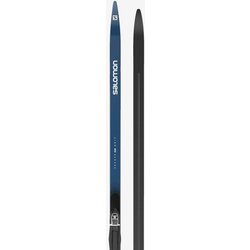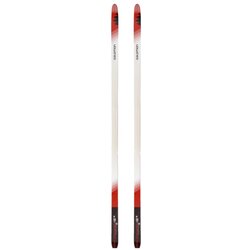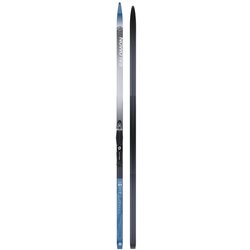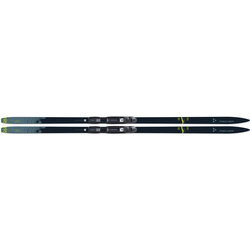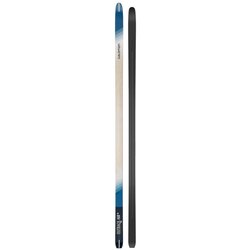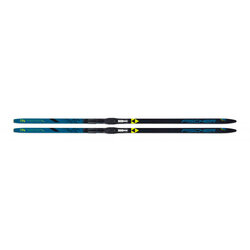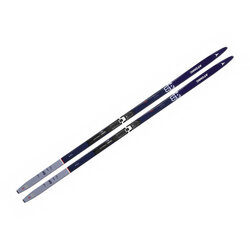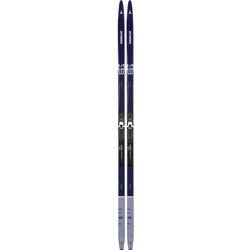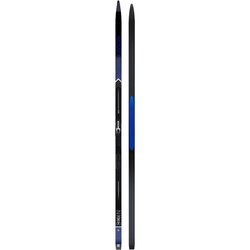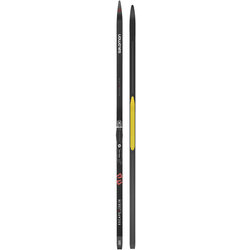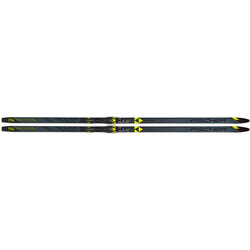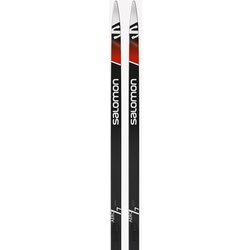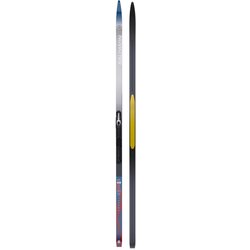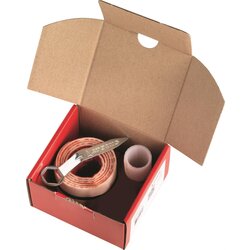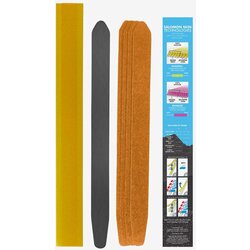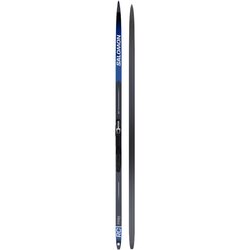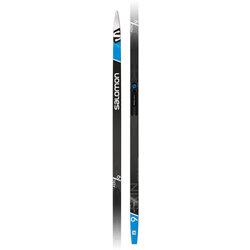Are Skin Skis Right for You?
What you Need to Know About Skin Skis Before You Buy
At Fresh Air we have been at the forefront of a sea change in cross country skiing. In the last few years, our best selling classic skis haven’t used grip wax or fischscales/crowns. Skin Skis are now the most popular skis to get grip. In this post we will talk about the helpful features that have made skins so popular, some of their disadvantages, and tips for shoppers looking to get out and ski more.
How Cross Country Skis Work
To understand the benefits of skin skis, it is important to take a moment to think about how a ski works, and what makes them different from older technologies. We can think of classic cross country skis as having two main portions – grip and glide. The glide section of the skis are the tips and tails which are remain constant contact with the snow. The glide portion of your ski can be waxed with a glide wax to help you go faster. They remain unchanged no matter how you get your grip.
The grip zone, which is approximately the middle third of the ski, is what we are interested in here. The middle, cambered portion of the ski is raised higher than the tips and tails of the skis. When weight is evenly distributed between two skis, such as when you are going down a hill, the grip zone should remain elevated away from the snow. When 60-70 percent of a skier’s body weight is applied to the ski, the cambered section should fully compress. This allows the grip section to temporarily make contact with the snow, and the skier to propel themself forwards.
A key take-away here is that size matters. Whatever style of grip you choose, making sure that it is optimized for your weight is the most important factor. A good ski shop will work to select a ski that will be soft enough to kick, or get grip with, and stiff enough that you get good glide from that kick. This is even more important with skin skis than other types of grip applications.
Waxable Skis: The Best in Glide (and Grip Sometimes Too)
Traditionally, the grip zone was covered in a grip wax. The advantage to grip wax is that you are able to adjust the length of your grip zone. Too much grip? Scrape some wax off. Not enough? Add more. Grip wax can also provide some gliding benefit during unintentional contact with the snow. Because of this a perfectly waxed ski will always provide the best balance of grip and glide.
The trouble with grip waxes is that they are highly temperature dependent. Grip waxes come in a range of compositions – soft and goopy for warm days, and hard and almost candle like for cold. Cold days are usually easy to wax for as some waxes, such as Swix Blue Extra, can cover a wide range of colder temperatures.
Warmer days are often more challenging. If your wax is too hard, snowflakes cannot penetrate your wax, so no grip. Too soft, and the snow stays stuck in the wax, leading to clumping or horrible glide. Bad wax can lead to a very frustrating experience.
Fishscale/Crown Skis: Great Grip for Beginners and Occasional Skiers
For a long time crown, or fishscale skis were the only alternative. Crown skis have a pattern cut into the grip section of the ski that allows for glide in one direction, but that bite into the snow in the other allowing propulsion. Crown skis often have a very long grip zone, and the plastic ‘teeth’ that cut into the snow tend to cause some drag. Crown skis are slower than the other options.
The advantage to crown skis is that they get easy, excellent grip in all but icy conditions, fit wide weight ranges, require minimal maintenance, and come at a cost savings over skin skis. For those brand new to the sport, or those emphasizing control over speed, crowns are often the best choice for these reasons.
A simple crown ski such as the Salomon Escape Grip or the legendary Fischer Fibre Crown remain an excellent choice for new skiers. For those who are looking to take their skiing up a notch, but are not interested in waxing, skins are the better choice.
Skin Skis: The Best of Both Worlds?!?!
While perfectly waxed skis will always be fastest, skin skis are a pretty close second, and add the benefit of very good grip across a wide range of snow conditions. At Fresh Air, we have tested skin skis on icy days, warm days, cold days, and even rainy days and have yet to lose grip. If the ski is fitted properly, and your technique is good, you can leave the wax kit at home and know that you can climb any hill.
To be clear, skin skis are not without their limitations. Those accustomed to crown skis, and beginners sometimes find that the skins are a little more difficult to set in the snow. Skin skis will be more rewarding with good technique. We suggest lessons for all skiers as they develop in the sport.
Incidental contact between your grip zone and the snow happens. Skins do not drag as much as crowns, but will still slow you down some compared with waxable skis. This is especially the case in loose snow conditions, as the fibres of the skin intermingle with loose snow. For that reason, skins are certainly at their best on groomed trails such as those found on the SJAM Winter Trail or in Gatineau Park.
Skis purpose built for skins such as the Salomon Aero 9 or Madshus Nordic Pro are ideal, as they have been designed to accommodate for additional skin material under foot, thus optimizing glide while still closing quickly when you kick. As skin skis are more an enthusiast product than a beginner product we usually suggest spending a little bit more than you would on an entry level ski. Expect to spend at least $250. Top of the line race-cut skin skis can cost over $900.
Fit can be finicky. The grip zone of skin skis is typically a little shorter than a fishscale ski and is not adjustable. To get the most out of your skin skis, you want the fit of the ski to balance grip and glide, according to your skill level. Quality skin skis will include a way to adjust the binding slightly forwards and back to fine tune this balance. Such systems only work with NNN boots, so for some customers this may mean an additional expense.
Buy Skin Skis from a Specialist Retailer
To ensure a proper fit, and the best grip and glide, choose a retailer with a larger selection of what looks like the same skis. When fitting skis, it is important to have many skis of the same model to choose from as the camber on each pair will be slightly different. Your weight should be considered first, with height and ability also informing what ski to choose.
At bare minimum, make sure your retailer measures the ski using a paper test, where you stand on the skis and they run a piece of paper under foot. At Fresh Air we often use a mechanical camber machine to instead of this this test. Our pointer machine allows us to measure how a ski reacts to a given load. We test skis to make sure the grip zone is off the snow at half body weight, but compressed at 60%-70% of skier weight to ensure good grip. This tool provides us with an added layer of confidence in selecting skis for customers in store and across the country.
If properly fit, and right for the kind of skiing you do, skin skis can be a revolutionary product. Skins have made it that much easier to be confident to take your skis out in any conditions and have a good time. Come in to Fresh Air at 1291 Wellington West Ottawa or shop online and we can help you find your perfect pair today!

